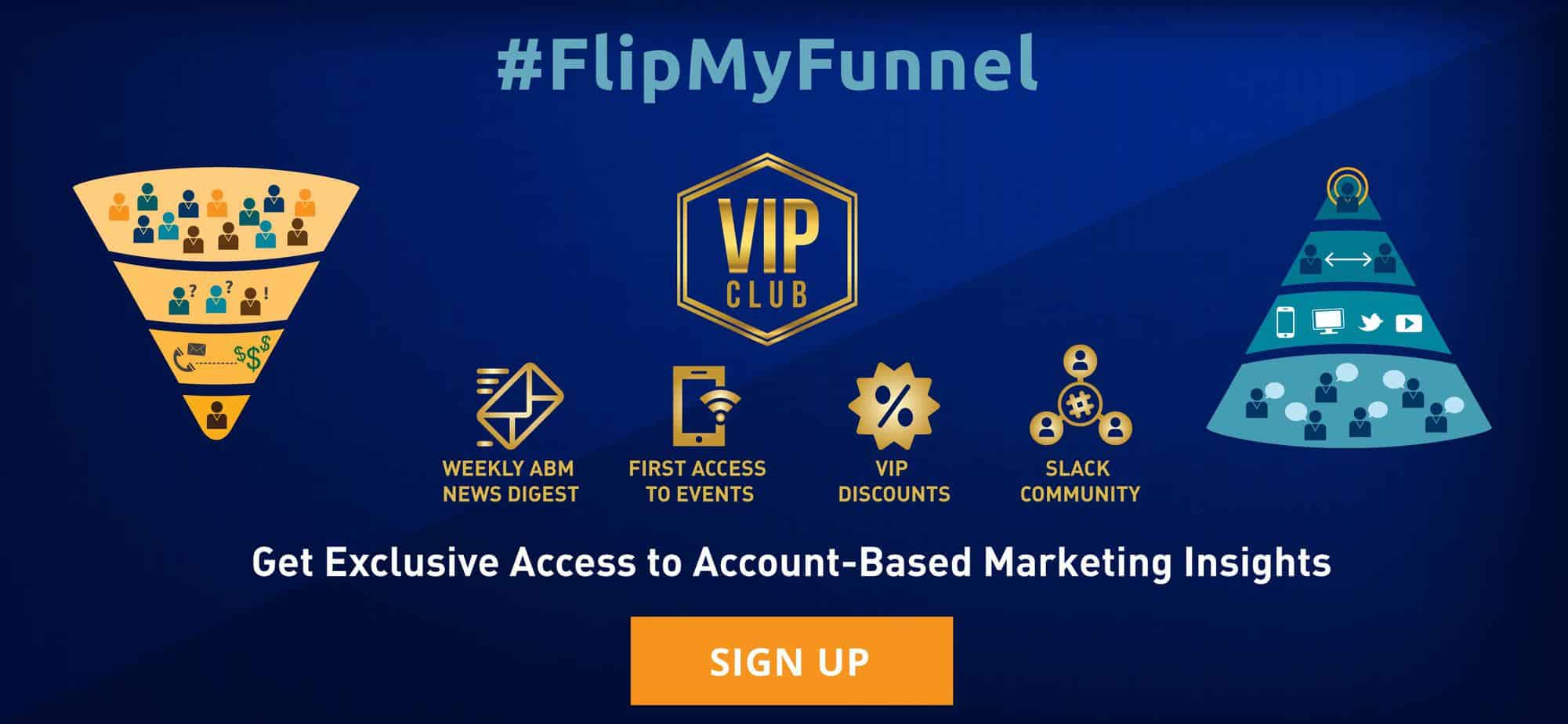This week brought us a lot of great articles about account-based marketing from some of the top thought leaders in the industry. Below, you will find real-world practical steps to implementing a successful account-based marketing strategy along with key insights on how to use data in your ABM strategy and how MarTech is evolving to meet the needs of account-based marketers.
There are many different opinions on what is most important to having a successful account-based marketing strategy, but its not often that you find an article showing the steps needed to get there. In this article by Howard Sewell, president of Spear Marketing Group, we learn the four common traits that successful campaigns share as well as the seven steps to creating and executing a successful ABM program.
Flipping Points:
- The most effective ABM campaigns share four common traits. Successful ABM campaigns typically are: segmented, integrated, content-driven, and set for a sufficient duration.
- Success relies less on an accident of timing, and more on a consistent nurturing and education of the targeted list of accounts.
Key Takeaway:
Account-based Marketing is not something to be undertaken, and invested in, simply because it’s the hot new trend. As part of an integrated, cohesive demand generation mix, one that blends both inbound and outbound tactics, ABM can play a key role in driving opportunities at high-value accounts.
- Howard Sewell, President of Spear Marketing Group
2. 5 Stages of Maturity in Marketing Technology
ABM relies heavily on technology to reach key accounts and engage decision makers on the best channel possible. Technology is constantly evolving, leaving some products obsolete as new tools emerge. In this article, Scott Brinker gives us a look into the product life cycle of marketing technology what your company may have to look forward to in the coming years.
Flipping Points:
- The marketing technology space is a collection of many different categories (including account-based marketing) — each at different stages of maturity.
- There are always new entrants to market, at all stages of a category’s maturity.
Key Takeaway:
The number of active marketing technology vendors may be nearing its peak, but the adoption of marketing technology has tremendous growth ahead.
- Scott Brinker, Editor of chiefmartec.com
3. Fueling Your Marketing Pipeline with Data-Driven Thinking
Data is very useful in not only predicting but also analyzing an ABM campaign. After reading this article by Peter Isaacson, CMO for Demandbase, you’ll learn what data is most useful in evaluating your marketing plan.
Flipping Points:
- Marketers can leverage useful tools like predictive analytics to identify and attract top prospects from the very top of the funnel. It’s not surprising that 83 percent of B2B users experience a considerable or a very high business impact due to predictive analytics.
- Focusing on more relevant metrics like pipeline opportunities, close rates and website lift can help you get a better sense of how your most important accounts are engaging with your brand and help you focus in on the marketing activities that convert best.
Key Takeaway:
Account-based marketing help marketers use data effectively a lot earlier in the buying cycle, in a way that fits how customers actually make purchasing decisions.
- Peter Issacson, CMO of Demandbase
4. From Tactical Overhead to Strategic Growth Driver: B2B Marketing in the Digital Age
ABM relies on technology to find prospective clients and engage them through the best channel possible. The digital age is changing the way that we do B2B marketing, and we can see it’s impact worldwide as Jason Gow gives us his insight on how the marketing landscape is changing all the way on the other side of the world!
Flipping Points:
- Marketing is a driving force for growth within an organization, playing a critical role in matching market needs with company solutions through many forms of strategic and persuasive communications.
- Success for marketing is very much about providing a platform for business development teams to build an intimate relationship with the account.
Key Takeaway:
Essentially, B2B marketers in the digital era will have a seat at the revenue table. Digitally-enabled marketing functions will drive growth and help companies adapt to the market’s rapidly changing needs.
5. Why Account-Based Marketing is the Best Event Strategy
Marketing and sales teams across the country are all looking at the hottest topic in B2B Marketing this year, account-based marketing. In this article by Garrett Huddy, we explore why account-based marketing is especially effective in making your events better than ever.
Flipping Points:
- Pipeline acceleration should be more of a priority than demand generation at events, and account-based marketing supports that.
- ABM helps marketing to gain a stronger alignment with sales objectives and customer needs to generate.
Key Takeaway:
Using ABM to get the right mix of prospects, customers, and customer advocates to your events is an excellent way to create an environment that three objectives; support growth, retention, and loyalty.
- Garrett Huddy, Content Marketing Manager at Attend, Inc.
Learn more about ABM and the T.E.A.M. account based marketing framework:
- Target – Create a target account list for ABM
- Engage – Account based advertising
- Activate – Account based sales enablement tools
- Measure – Account based analytics
See the full Terminus account based marketing platform.
Check out some account based marketing examples.
Learn more about account based marketing services.
Terminus: an account based marketing software company.

